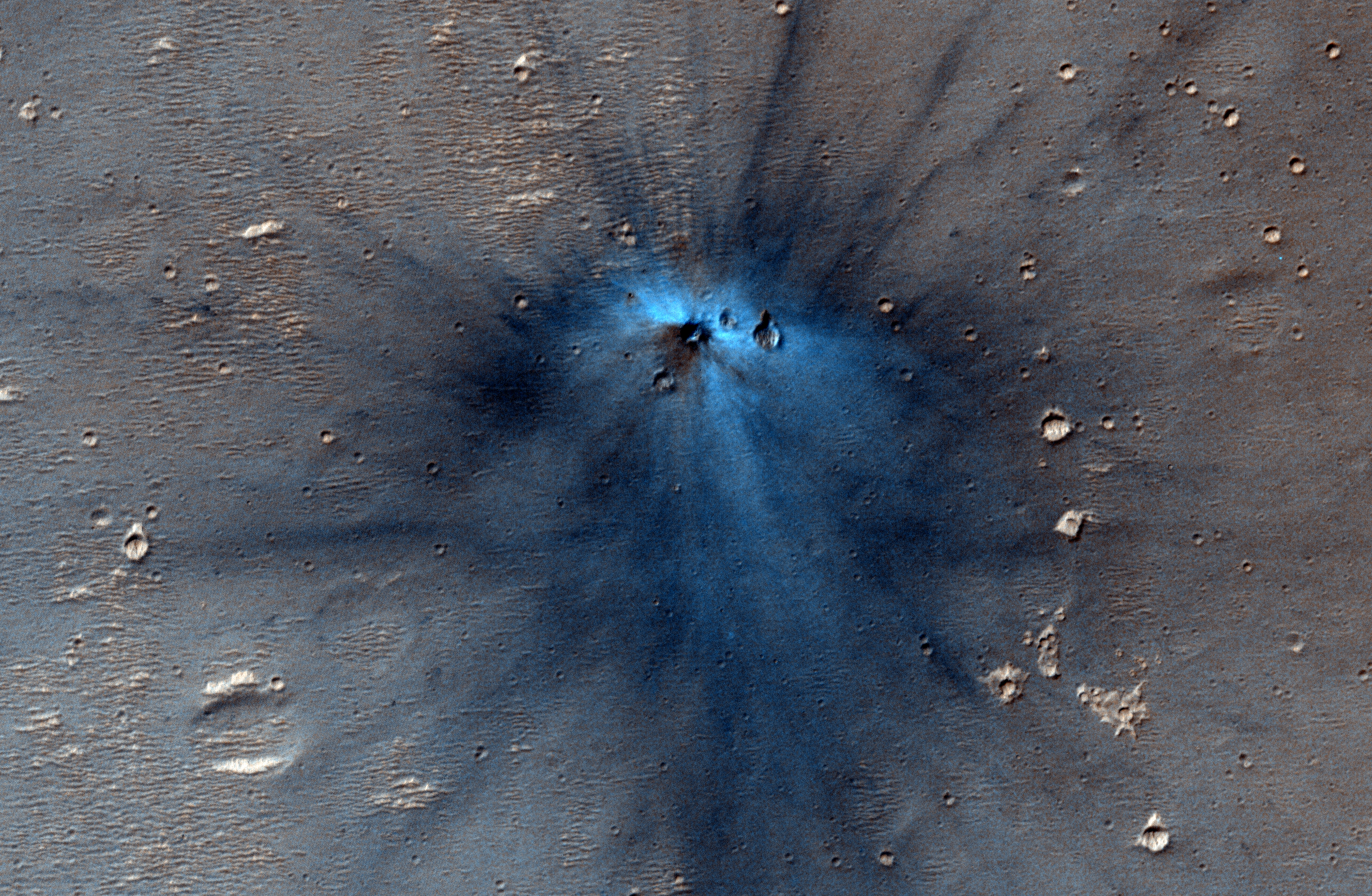Today's Image of Mars is a perspective view of Sigli and Shambe craters in Ladon Valles, taken by Mars Express' High Resolution Stereo Camera. Scientists believe these two connected craters, called a doublet crater, were formed by the same projectile, which broke apart just before impact. Sometime following the impacts the craters were partially filled with sediments
The ejecta pattern indicates the presence of subsurface ice at the time the impact occurred. The heat from the impact melted the subsurface ice, and the ice that didn't sublimate was thrown out with the rock ejecta.
The fractures you see in the two craters were most likely created by sedimentary compaction and the subsequent dry spell that has been gripping Mars for the last couple billion years.
Clicking on this image will take you to the original high resolution image. [See the ESA's associated article]












